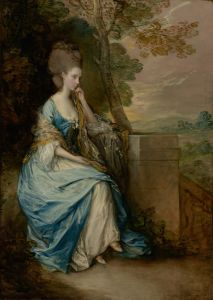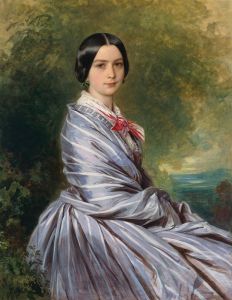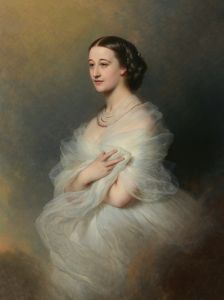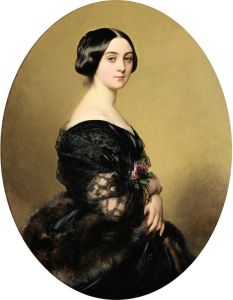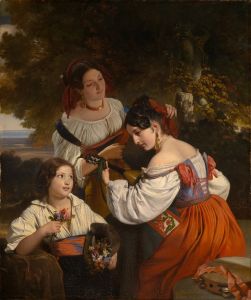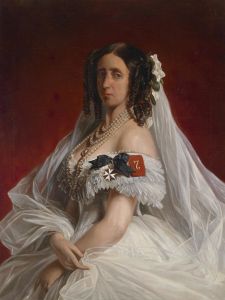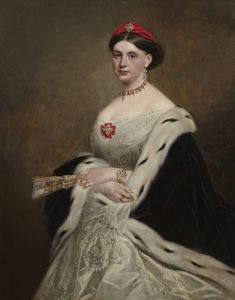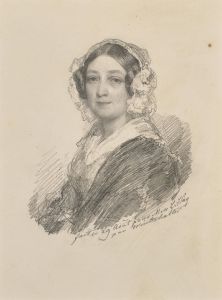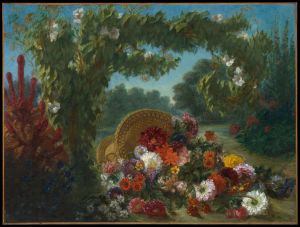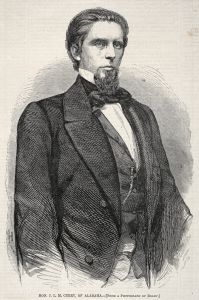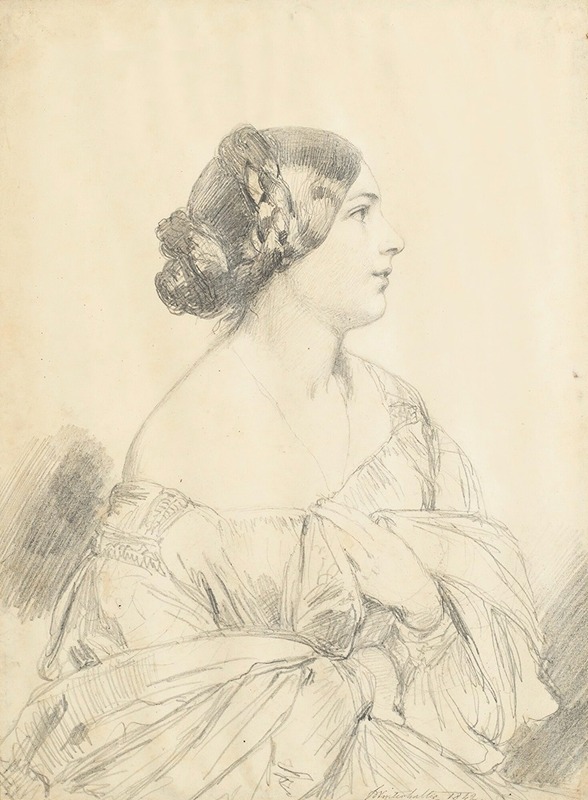
Portrait Of Louise Hay, Future Baronne Gudin
A hand-painted replica of Franz Xaver Winterhalter’s masterpiece Portrait Of Louise Hay, Future Baronne Gudin, meticulously crafted by professional artists to capture the true essence of the original. Each piece is created with museum-quality canvas and rare mineral pigments, carefully painted by experienced artists with delicate brushstrokes and rich, layered colors to perfectly recreate the texture of the original artwork. Unlike machine-printed reproductions, this hand-painted version brings the painting to life, infused with the artist’s emotions and skill in every stroke. Whether for personal collection or home decoration, it instantly elevates the artistic atmosphere of any space.
Franz Xaver Winterhalter, a renowned 19th-century German painter, is celebrated for his portraits of royalty and aristocracy across Europe. Among his extensive body of work is the painting "Portrait of Louise Hay, Future Baronne Gudin." This artwork exemplifies Winterhalter's signature style, characterized by its elegance, attention to detail, and the ability to capture the grace and poise of his subjects.
Louise Hay, the subject of this portrait, was a notable figure in her own right. She later became known as Baronne Gudin, indicating her marriage into the French nobility. The portrait likely dates from the mid-19th century, a period when Winterhalter was at the height of his career, painting for various European courts. His clientele included the likes of Queen Victoria of the United Kingdom, Emperor Napoleon III of France, and Empress Elisabeth of Austria, among others.
Winterhalter's portraits are distinguished by their luxurious depiction of fabrics and textures, as well as the idealized yet lifelike representation of his sitters. In "Portrait of Louise Hay, Future Baronne Gudin," these elements are likely present, showcasing Winterhalter's ability to blend realism with an idealized beauty that appealed to the tastes of the aristocracy. His use of light and shadow, combined with a soft color palette, often imbues his portraits with a sense of warmth and intimacy.
The painting of Louise Hay would have been commissioned to commemorate her status and beauty, a common practice among the elite of the time. Portraits served not only as personal mementos but also as symbols of social status and power. Through Winterhalter's skilled brushwork, Louise Hay would have been immortalized in a manner befitting her social standing.
Winterhalter's work is often noted for its technical proficiency and the ability to convey the personality and status of his subjects. His portraits are not merely visual records but also convey the cultural and social milieu of the 19th-century European aristocracy. The "Portrait of Louise Hay, Future Baronne Gudin" would be no exception, offering insights into the fashion, aesthetics, and societal norms of the time.
While specific details about the painting's current location or provenance might not be widely documented, Winterhalter's works are held in high esteem and can be found in major museums and private collections worldwide. His portraits continue to be studied and admired for their artistic merit and historical significance.
In summary, "Portrait of Louise Hay, Future Baronne Gudin" by Franz Xaver Winterhalter is a testament to the artist's mastery in portraiture and his ability to capture the essence of 19th-century European aristocracy. Through his work, Winterhalter provides a window into the past, allowing contemporary audiences to appreciate the elegance and sophistication of a bygone era.





